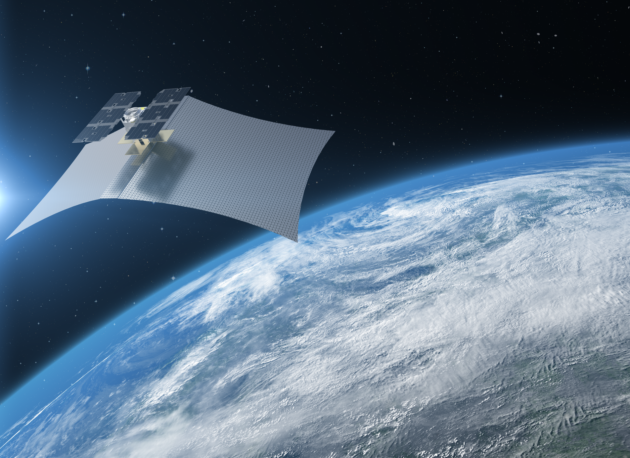Capella First For ‘Holy Grail’ of Real-Time SAR-Sat Images
Posted on
 WASHINGTON: With its new partnerships with Inmarsat and terminal provider Addvalue, Capella Space will become the first — and currently only — firm to allow its customers to almost instantly task a satellite to image a particular ground target and view it with synthetic aperture radar (SAR). The images can be in a users hands within about 20 minutes; and only a few minutes for a quick first-look picture.
WASHINGTON: With its new partnerships with Inmarsat and terminal provider Addvalue, Capella Space will become the first — and currently only — firm to allow its customers to almost instantly task a satellite to image a particular ground target and view it with synthetic aperture radar (SAR). The images can be in a users hands within about 20 minutes; and only a few minutes for a quick first-look picture.
Such quick turn-around times (known as latency in remote sensing jargon) for images of a missile launch facility, adversary troop movements or a suspected terrorist enclave is one of the holy grails of military commanders in the field. When completed, Capella’s network also will be able to provide a new image of a target area every hour, a critical capability for detecting change. SAR satellites can provide imagery even through cloud cover and at night. Indeed, Capella already is under an exploratory contract with the National Geospatial-Intelligence Agency (NGA).
Currently, it can be up to eight hours between the time a user requests images from a satellite provider to when the satellite gets oriented in space to take the ‘pictures,’ and another couple of hours to receive the images.
“Government customers really can’t wait that long,” says Capella CEO Payam Banazadeh. “We are able to make the information collected from our radar satellites very actionable.”
The trick is the link between Capella’s Low Earth Orbit (LEO) satellites and Inmarsat’s fleet of 13 Geostationary (GEO) satellites and their ground stations, Banazadeh told me in an interview yesterday, as well as to Amazon’s AWS Ground Stations. Capella has been using the AWS network, which soon will include a satellite ground station at every Amazon data center since May, after launching their first satellite (called Denali) in 2018. The second of Capella’s 36 planned microsatellites, called Sequoia, is set to launch in January 2020, said Banazadeh.
Here’s how it will work. A customer uses Capella’s website to call in a tasking order. That tasking order is sent electronically to an Inmarsat ground station, which transmits it up to one of Inmarsat’s satellites. Those satellites in turn pass in back down to Capella’s satellites, which then reorient themselves to take images — own to 0.5 meters in resolution.
The link between the Inmarsat and Capella satellites is an onboard terminal that functions sort o like a modem built by Addvalue, according to a Capella Space press release announcing the partnership. Addvalue, a digital, wireless and broadband communications technology firm, is providing its Inter-Satellite Data Relay System (IDRS) terminals for integration on Capella’s satellites.
The press release explains: “Addvalue’s IDRS will keep Capella’s constellation of 36 SAR micro-satellites in constant contact with Inmarsat’s … global L-Band network, enabling two-way, secure and fast IP-based connectivity. Unlike traditional time-consuming ordering processes that rely on legacy systems such as fax machines, Capella customers will use a web application to instantly log and verify tasking requests routed through the Inmarsat network.”
Banazadeh noted that the Addvalue terminals are highly secure, and that data passing among the various nodes in the network is encrypted. Because Capella is specifically marketing to the Defense Department and other government customers, “we take encryption very seriously.”
Each Capella satellite also will have an onboard graphics processing unit (GPU), the satellite can ‘develop’ one SAR image rapidly and pass it back to a customer’s ground station in a sort of thumbnail picture. The full resolution images gleaned from the SAR sensor will be sent to the AWS Ground Stations. Banazadeh said that Capella’s satellites will be able to link with an AWS ground station every 20 minutes.
“Details of the imaging request — e.g., the location, time and frequency of revisit — will be forwarded through the network to the next available satellite, which will maneuver to complete the task and return an image and metadata to Capella’s ground station network within minutes of acquisition,” the press release notes.
“Real-time tasking and receiving data is going to b the future,” Banazadeh says. “Over time every single remote sensing company will go this direction.”
Subscribe to our newsletter
Promotions, new products and sales. Directly to your inbox.
